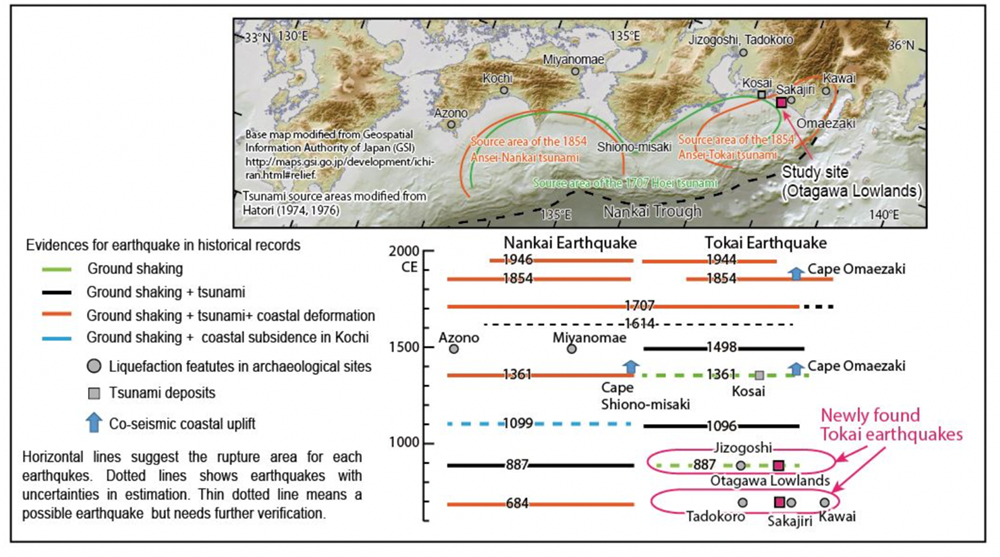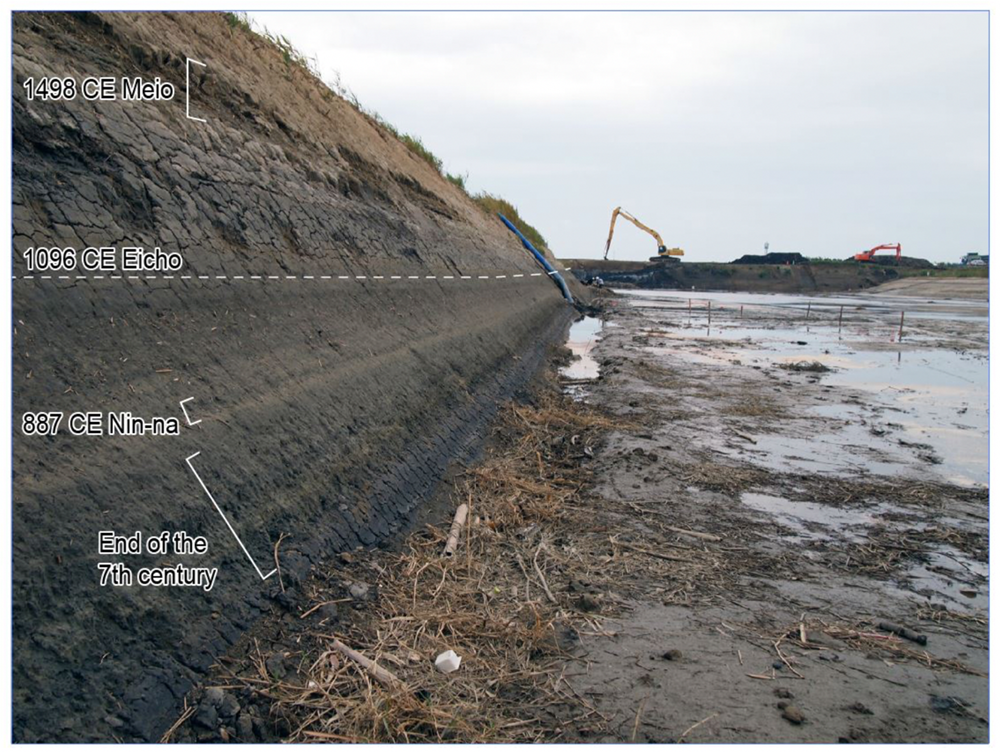Traces of late 7th and 9th century Tokai Earthquakes discovered
- Clarifying the connection between Tokai and Nankai Earthquakes over the past 1300 years -
Summary of AIST Press Release November 19, 2019
>>Japanese
Osamu Fujiwara (Research Institute of Earthquake and Volcano Geology), Akira Aoshima (Iwata Minami High School), and others discovered sedimentary deposits that represent evidence of two previously unknown tsunamis in the Western Shizuoka Otagawa Lowlands. While Nankai earthquakes in 684 CE and 887 CE are documented, it was previously unknown if corresponding Tokai Earthquakes occurred. Historical document indicates that the 887 CE earthquake in particular caused ground shaking over a wide area including the Tokai region, and the new discovery of tsunami deposits in Western Shizuoka confirms that a corresponding Tokai Earthquake also occurred. This new discovery clarifies the timing between Nankai and Tokai Earthquakes over the past 1300 years. These results were published on November 18, 2019 in the journal Quaternary Science Reviews.
This study was published on November 18, 2019 as below:
Fujiwara, O., Aoshima, A., Irizuki, T., Ono, E., Obrochta, S. P., Sampei, Y., Sato, Y. & Takahashi, A. (2019) Tsunami deposits refine great earthquake rupture extent and recurrence over the past 1300 years along the Nankai and Tokai fault segments of the Nankai Trough, Japan. Quaternary Science Reviews, 227, 105999.
Fig. 1. Temporal and spatial distribution of historical Great Nankai Trough earthquakes.
Fig. 2. Occurrence of the historical tsunami deposits in the Otagawa Lowlands.



